Motorola Droid X2 Review - A Droid X with Tegra 2
by Brian Klug on July 7, 2011 8:31 AM ESTPerformance
The X2 is powered by a 1.0 GHz Tegra 2 SoC which consists of two Cortex-A9 CPUs and NVIDIA’s ULP GeForce GPU. Anand has already detailed the architecture pretty thoroughly in our Optimus 2X review, which was the first handset to be built around Tegra 2, so if you’re interested check that out. Since then Tegra 2 has scored a lot of Motorola design wins, starting with the Atrix, the Xoom, and hopefully the unreleased Bionic.
I’ve also gone ahead and borrowed a Motorola Droid X from a friend, which I then proceeded to wipe (don’t worry, they’re used to this kind of behavior) and install the 2.3.3 update on. I then re-ran our benchmarks and updated things to give a better perspective of what the performance delta looks like right now with the X2 running 2.2.2 and the X running 2.3.3, both of which are current as of this writing.
First up are our web benchmarks, which primarily test JavaScript and page rendering. We’re still running SunSpider 0.9, though we’ll soon switch to 0.9.1 and report that alongside. JavaScript performance on Motorola’s themed browser is actually very good, and comes in nearly at the top of our charts, alongside the Optimus 2X.

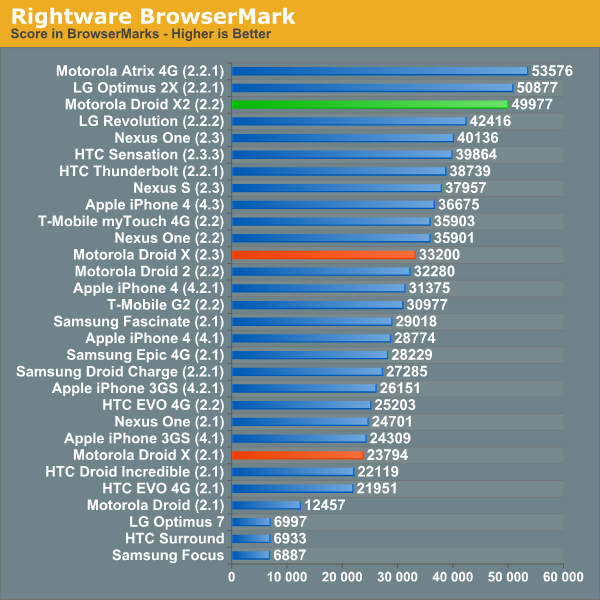
Flash is next, and here the X2 delivers very good performance that’s on par with the Optimus 2X, even though we’re dealing with a qHD screen compared to WVGA.
GLBenchmark 2.0 is a regular in our benchmarking section, and the X2 gets a run through this test as well. Performance is pretty close to the Atrix but just behind it, perhaps due to the Atrix having 1 GB of LPDDR2 compared to the X2’s less inspiring 512 MB of LPDDR2.
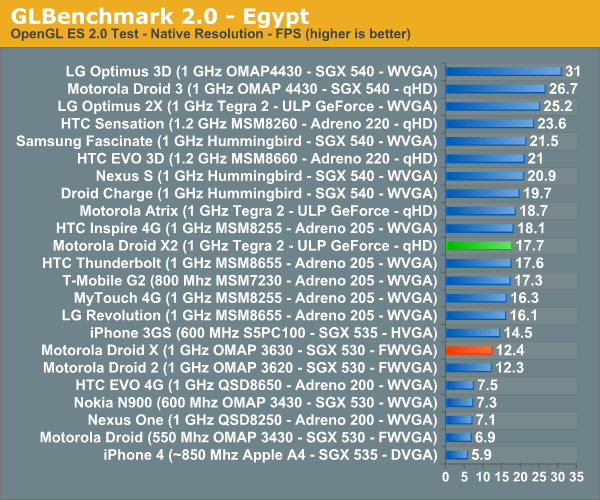
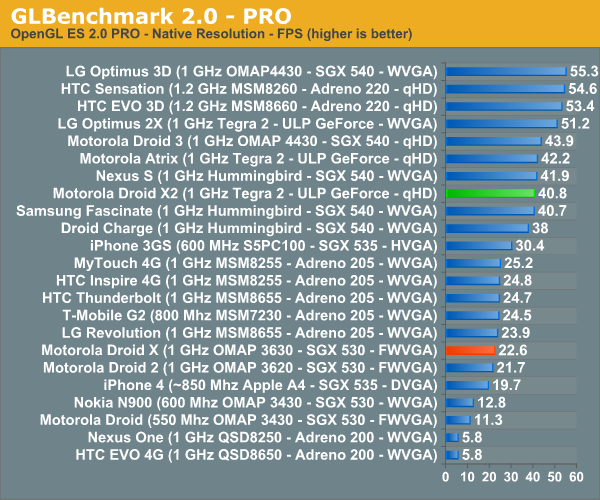
Next is BaseMark ES2.0, which is a slightly updated version of 3DMarkMobile ES2.0. Here we run at the default resolution, which is VGA, and thus get a picture without being constrained to just native resolution constantly.
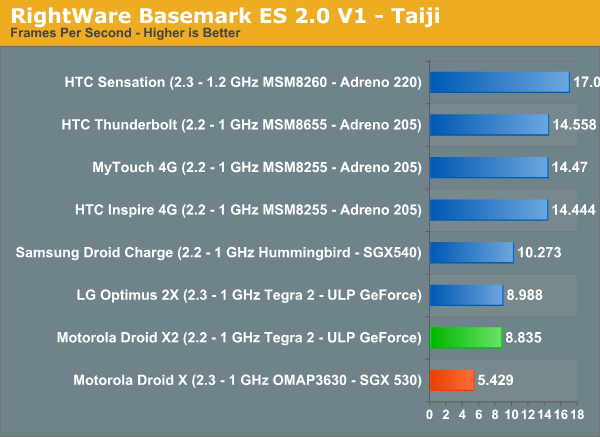
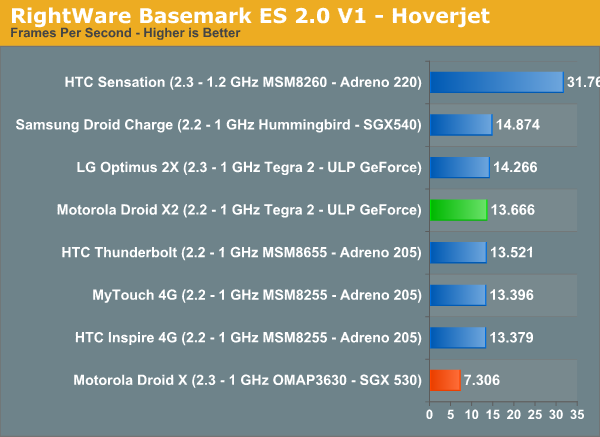
The Android port of Quake 3 is what we sort of started all of this with, and we’re still running it even if it’s starting to hit vsync in parts. The results look strange here until you realize that this is a qHD phone, not WVGA.
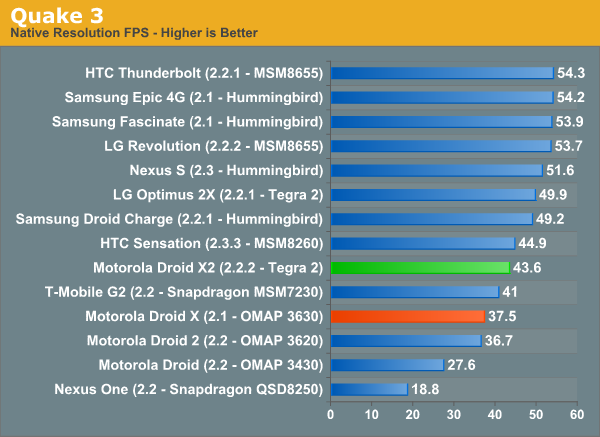
Next up is Linpack, which added a multi-threaded version of the benchmark earlier this week. I’ve run it on all the dual core devices I could get my hands on.
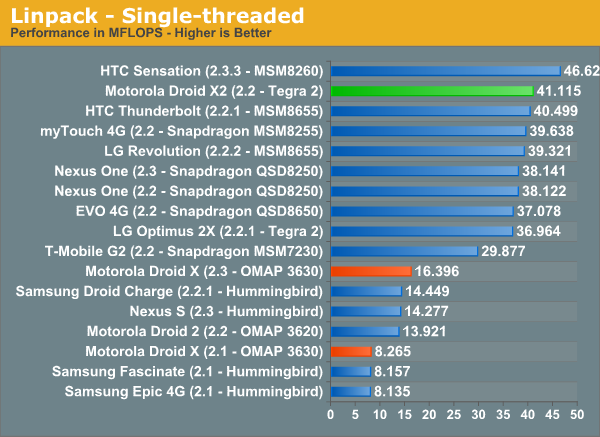
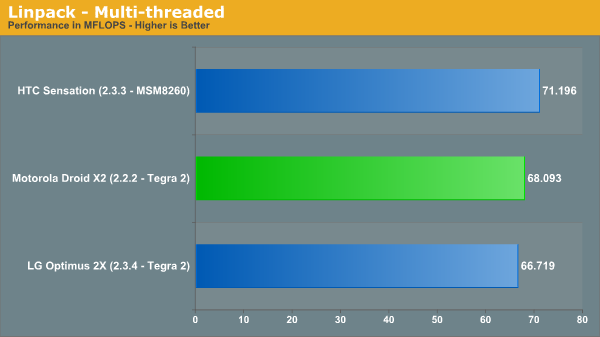
Last up is Quadrant which will be depreciated pretty soon as it’s at the framerate cap in its 3D tests, has overall little to no documentation for most of the subtests, and generally is woefully out of date. The X2 does extremely well in the I/O test thanks to it using EXT3 for most partitions.
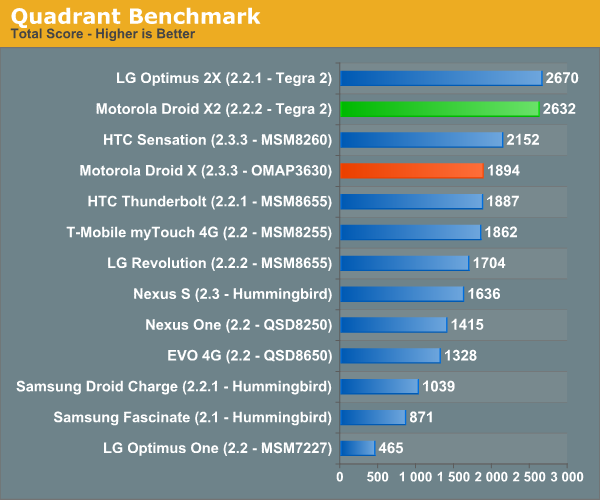
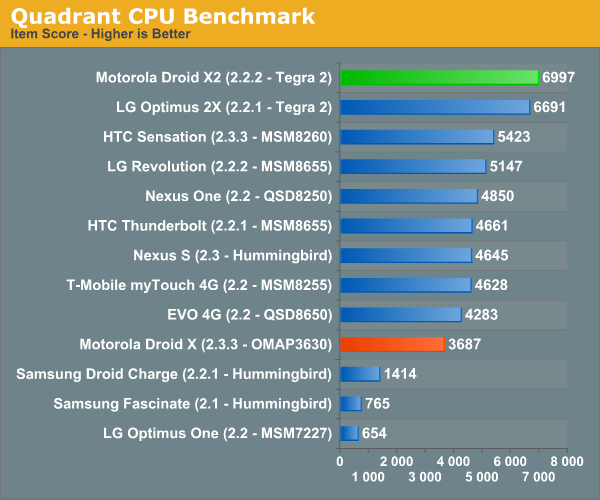
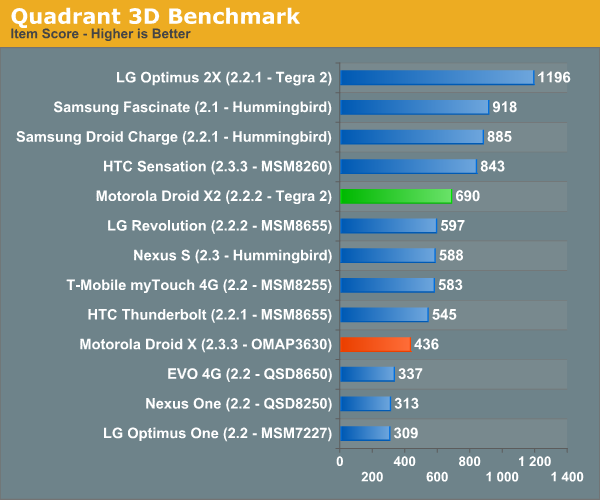
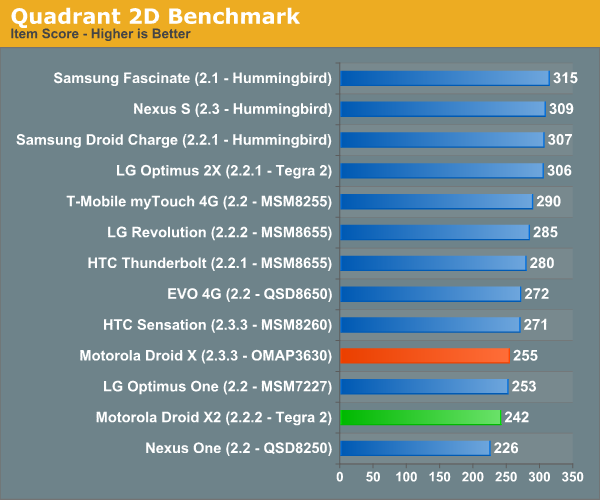
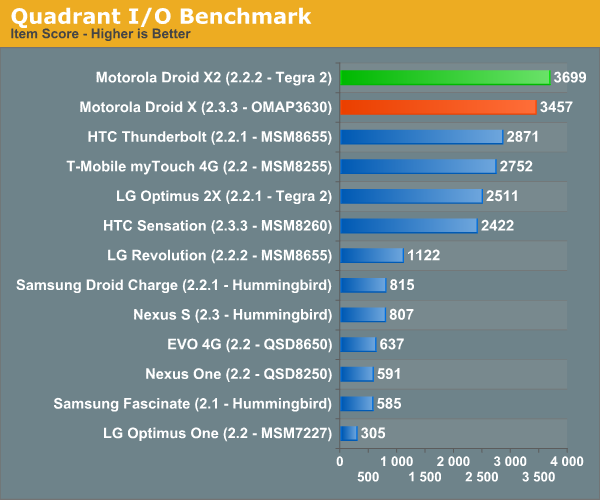
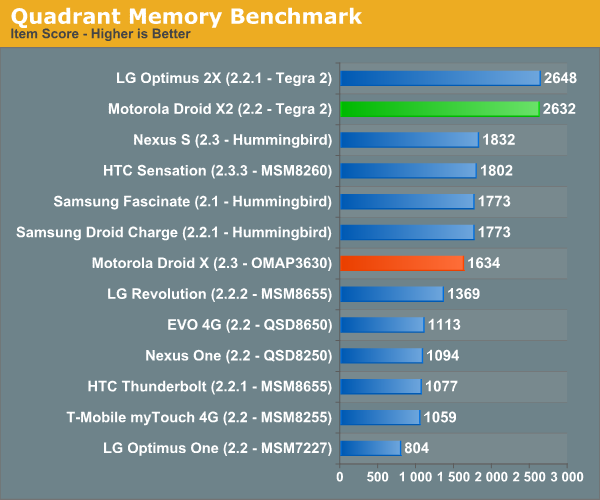










72 Comments
View All Comments
HangFire - Thursday, July 7, 2011 - link
When are you going to review the Charge? Now, there's a screen!HangFire - Thursday, July 7, 2011 - link
Oops I see it has been reviewed, but it is missing in the third comparison graph- Contrast- on page 2.HangFire - Thursday, July 7, 2011 - link
Page 5? I'm sorry I'm used to MODERN comments section with at least a 60 second edit feature.Brian Klug - Thursday, July 7, 2011 - link
It isn't missing, it simply isn't included. The effective contrast of the SAMOLED+ panels is undefined (divide by zero).-Brian
Vepsa - Thursday, July 7, 2011 - link
What app do you show in the GPS testing screenshots?Brian Klug - Thursday, July 7, 2011 - link
I like to use GPS Test Plus, it does a decent job.-Brian
cditty - Thursday, July 7, 2011 - link
No reason to upgrade... I bought my Droid X for .01 from Amazon when I rid myself of the craptastic AT&T in my market.It is the best phone I ever had (I was an iPhone 4 user on AT&T). Verizon's network is what makes me say that, because ALL of the phone works ALL of the time (calls & data).
The original X is plenty fast. My next upgrade will be when my market goes LTE (a long way off). By then, there will be some great phones to be excited about. Funny how phones are the new *upgrade* hobby for old school computer enthusiast.
silow675 - Thursday, July 7, 2011 - link
Brian I think you have the best mobile handset reviews. Great work on including thorough reviews on mobile displays - something lacking in most mobile reviews.Spoelie - Thursday, July 7, 2011 - link
That thing looks hideous compared to recent HTC ventures, like some 80's throwback.Mind you, I'm not talking about performance or usability or screen quality or ... It's purely my own opinion on physical styling of the device.
jonup - Thursday, July 7, 2011 - link
Well, we spent the 90s and the better part of the last decade making phones smaller and more portable... and then all the effort went down the drain.You can thank Apple for that. After the iphone everyone try better them with bigger and heavier phone. Remember, in America bigger is better!